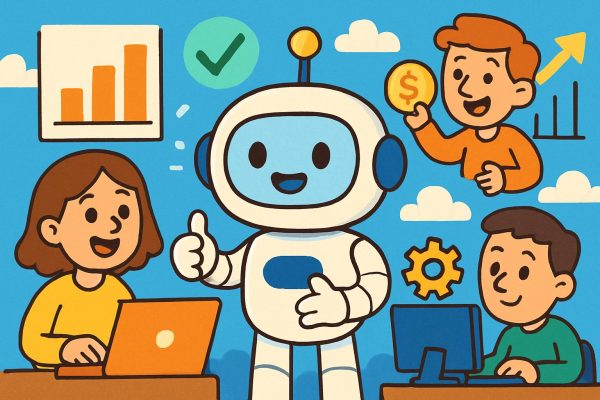Can a chatbot with a talent for words hold its own in the high-stakes world of stock trading? One experiment gave AI a modest amount of cash and let it try. The results were eye-opening, but they also sparked deeper questions. How far should technology go in shaping decisions that drive the market?
Someone gave ChatGPT $100 and let it trade stocks for a month tells the story of a Reddit user who used OpenAI’s GPT-4 model to experiment with stock trading. With an initial investment of $100, they sought to evaluate how well the technology could pick smaller, lesser-known stocks over six months. The project quickly drew attention when, in the first month, the portfolio delivered a 25% return, earning an extra $25. By comparison, other indexes like the Russell 2000 and XBI, along with the S&P 500, saw much smaller gains during the same timeframe.
While the experiment demonstrated promising early results, it wasn’t entirely automated. The individual behind the project provided daily trading data to ChatGPT and implemented “stop-loss” rules to minimize risk, which required human oversight. Even under these constraints, AI showed noticeable capabilities in this scenario. That said, experts remain cautious. Past research mentioned in the article has highlighted both optimism and limitations in AI’s ability to consistently perform better than traditional investment methods over longer spans.
One significant implication raised was whether widespread adoption of AI in stock trading might change traditional market behavior. If AI-based systems became the standard, their strategies might counteract each other, leading to diminishing returns. For now, though, efforts like these demonstrate how everyday investors can try out tools available to explore trading methods.
Why This Matters
This experiment sheds light on how natural language processing tools like GPT-4 may eventually play a role in financial decision-making. While the technology isn’t new to markets, seeing it used by an average individual with limited capital reflects how AI tools are becoming more accessible. It also prompts broader questions about the role humans must maintain in guiding these systems. The combination of AI’s ability to identify patterns and process data with human involvement appears to deliver benefits, at least in the short term.
However, the broader market impact is worth considering. If AI adoption became universal among investors, any competitive advantage could diminish. That’s why understanding the interaction between technology-driven decisions and human involvement is important for anyone interested in utilizing these tools.
Potential Benefits
- Accessibility: Experiments like this show that AI can make traditionally complex financial tools more approachable for smaller, independent investors.
- Data-driven insights: Models like ChatGPT can analyze patterns in ways that some human traders might overlook, potentially identifying opportunities in lesser-known stocks.
- Risk management: Paired with protective trading measures like “stop-loss” rules, there’s potential to use AI to execute strategies that reduce loss exposure more effectively.
Challenges to Consider
- Reliability: The results of this one-month experiment cannot predict long-term performance. External factors could easily affect such outcomes.
- Human oversight: Despite improvements, the AI required daily input and monitoring, shaping realistic expectations of full automation.
- Market dynamics: If AI stock trading were to grow significantly, there’s a risk of strategies becoming less efficient as more participants rely on similar tools.
Business Applications
- A startup could create approachable AI trading assistants designed specifically for individual investors with small portfolios.
- A platform could help larger institutions integrate AI models like GPT-4 into their existing trading analytics systems for more refined insights.
- A tool could be built to teach amateur investors how to combine AI-powered suggestions with diverse trading strategies using interactive tutorials.
Experiments like this highlight the possibilities of AI in areas as intricate as financial markets, but they also stress the importance of carefully planned strategies and human involvement. While tools like GPT-4 are proving to be useful, their effectiveness—especially in high-stakes areas like stock trading—depends on how well they are handled and applied. As AI continues to progress, the key question isn’t just about its abilities but also about how it will integrate with human expertise to maintain a balance between efficiency and judgment.
—
You can read the original article here.
Make your own custom style AI image with lots of cool settings!
—
I consult with clients on generative AI-infused branding, web design, and digital marketing to help them generate leads, boost sales, increase efficiency & spark creativity.
Feel free to get in touch or book a call.




